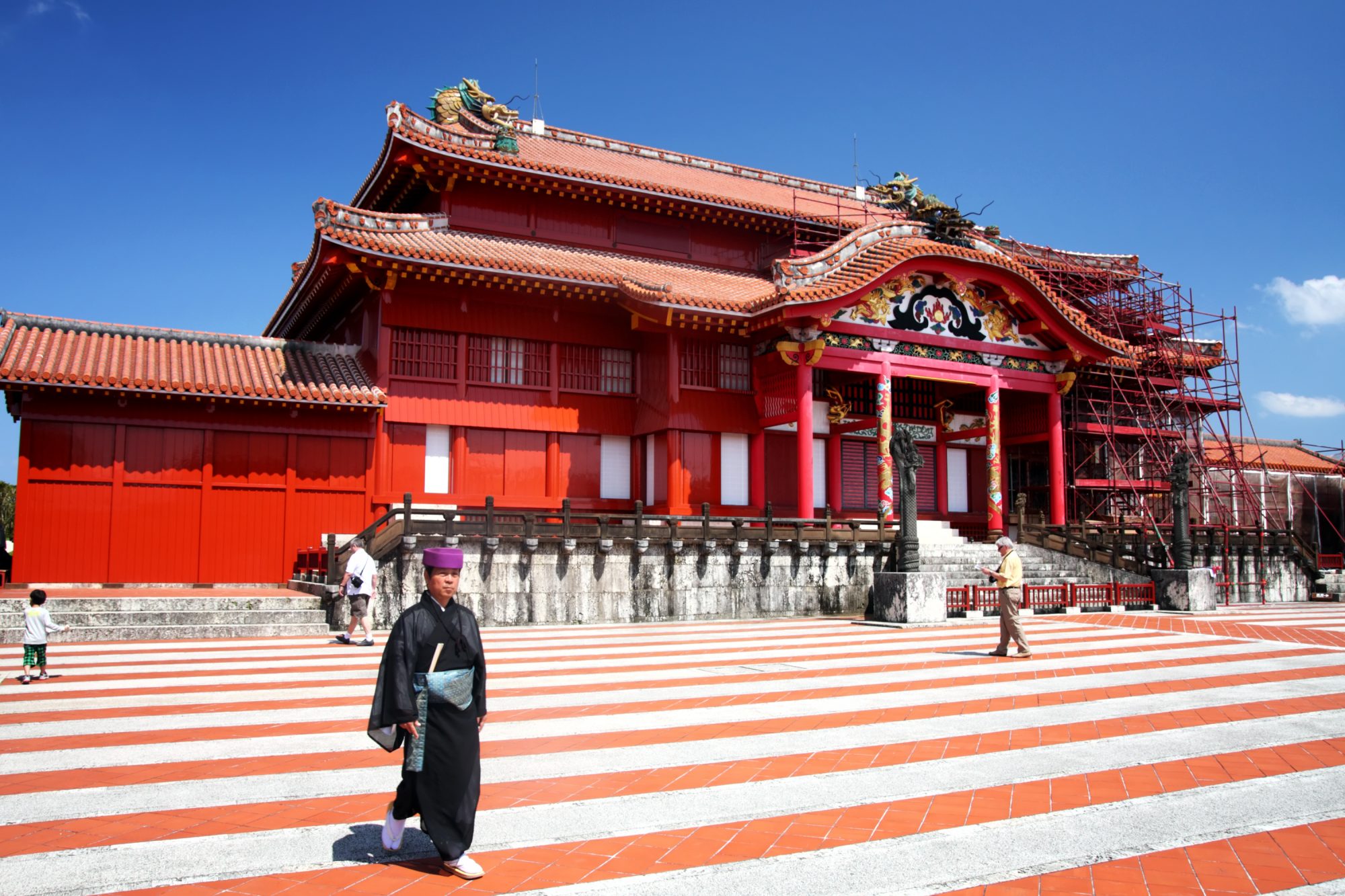
In the summer of 2017, I studied abroad in Okinawa, Japan, and one of my first excursions out with my host family was to visit the prefectural capital. As we walked down the famous International Street and examined various Okinawan specialty goods for sale, my host mother pointed to a second-floor restaurant and declared we were going to have lunch there. It served the best taco rice in town, she assured me, and I must try it, because it is an Okinawan specialty. My assumptions about Okinawan history were upended in that moment. How did this small island, so far away from rice production and tacos, come to specialize in a dish that brought the two together? And if this dish was considered classically Okinawan, what did “being Okinawan” entail?
These questions have stuck with me many years after my first trip to Okinawa, and became the inspiration for my International Studies Capstone research. I conducted a historical review of Okinawan identity formation, tracing major currents in thought from 1609, when Okinawa first came under Japanese control, to the modern day. I did not hope to produce some archetype of Okinawan identity, as this would not only be reductionistic but also disrespectful to the rich and individual lives led by the prefecture’s inhabitants. Rather, I sought to privilege the perspectives of Okinawans themselves on what it means to be Okinawan, and sketch how this has changed through history.
Okinawa Prefecture was originally called the Ryukyu Kingdom and existed as an independent polity. Though it lacked a strong military, it became a crucial crossroads for trade in Asia and was one of China’s most valued tributary states. In 1609, Japan pressured the Ryukyuan aristocracy to become a tributary state of Japan as well, a political arrangement tthat set the stage for all future relations. Ryukyuan aristocrats began discussing how their identity would be affected by this new power arrangement and their loss of political sovereignty. Eventually the arguments of Sai-On, a prominent intellectual and member of the court, prevailed. Based on his suggestions, the Ryukyu Kingdom began adopting influences from both China and Japan, such as bureaucratic organization and courtly language, respectively, while simultaneously cultivating Ryukyuan identity through cultural forms. This proved successful, allowing Ryukyuan culture to not only be preserved but to garner praise, such as was the case for a new Ryukyuan theater genre that grew popular in Japan. Sai-On’s sponsorship of Ryukyuan takes on Japanese and Chinese forms led to a flourishing of Ryukyuan cultural forms, even as the political and economic arrangements sought to disenfranchise the island kingdom.

In 1879, Japan officially annexed the Ryukyu Kingdom by arresting the monarchy, renaming the islands Okinawa Prefecture, and implementing harsh assimilation policies. An Okinawan linguist named Ifa Fuyu rose to prominence as he established the academic field of Okinawan Studies, a discipline that drew upon Western and Japanese sciences to study Okinawa and bring greater respect and attention to its peoples. This is a field that has continued to thrive to this day and was invaluable for my research. Ifa Fuyu claimed that through his research he had established a deep historical link between Okinawa and Japan, and as a combined result of colonization and belief in his work, many Okinawans came to see themselves as Japanese as well as Ryukyuan. Additionally, though Ryukyuan language, dress, and other outward signs of culture were suppressed, Okinawan literature and karate began to increase in popularity. Both were firm reassertions of Okinawan pride, having been taken in by Okinawan practitioners and transformed into new forms that became beloved as far afield as the Japanese capital.
The Pacific War and subsequent American occupation of Okinawa, from 1945 to 1972, saw a continuation of themes from the previous era but with a new dash of ambivalence towards Japan. Though many Okinawans still saw themselves as Japanese and Okinawan, they began to question their underprivileged position in relation to mainland Japan. Post-World War Two, they now also had to navigate the new governance and increased militarization of the island under United States rule, all while grieving those they lost in the Battle of Okinawa. This led to the blossoming of Okinawan literature, a genre which is defined by contemplations of Okinawan identity. The short story “Officer Ukuma,” by author Ikemiyagi Sekiho, is a key work in this genre, and I highly recommend it as both an example of the genre and a provoking portrayal of liminal identities. The story of Okinawa’s reversion to Japan is yet another example of Okinawan success within a hegemonic system. The American government in Okinawa implemented democratic reforms and Okinawans were quick to use their rights to gather and air grievances to advocate for reversion to Japan. Okinawans clever and extensive use of these and other systems eventually led to reversion, persisting until their calls were answered and Okinawa reverted to Japanese rule.

In the modern day, Okinawa is a fully fledged prefecture of Japan, though it bears the marks of its past, such as being the poorest prefecture in Japan and being stereotyped as speaking improper Japanese. Recently, politicians have argued in public discourse that Okinawans are linked by “all island struggle.” This idea does not seek to separate groups along ethnic or historical lines, but instead acknowledges the shared history of hardships faced by the many people that have made this island their home.
“All island struggle” and Okinawans’ history of ingeniously carving out spaces for their own identity to exist, even within overtly hostile political arrangements, is the key to understanding taco rice. It is based on Americanized Mexican cuisine, with Japanese rice added, to create a filling and low-cost option for soldiers venturing off base. Over time, it grew in popularity with locals and became the beloved staple that it is today. Taco rice represents, in its flavors and construction, Okinawa’s history of struggle and ingenuity, and bears the influence of the many groups that have come to coexist on this island together. Though I originally saw it as a syncretic, almost incongruous dish, I now appreciate taco rice as a strong symbol of Okinawan resiliency and adaptability. It makes frequent appearances in my kitchen, and I hope that everyone will remember Okinawa as they try this incredible, unique, and delicious dish.
About the Author
Caroline Dunphy is a senior majoring in International Studies and Cultural Anthropology and minoring in Japanese and History. She will graduate in May 2022, and has interviewed with a program to work in Japan starting in Fall 2022. She will continue studying Japanese and eventually, she plans to attend graduate school to study cultural anthropology.
Navigating Borders
From water to dance, science to film, clay to gender, the liberal arts helps us navigate the borders in our lives that are physical, metaphorical, or cultural.
